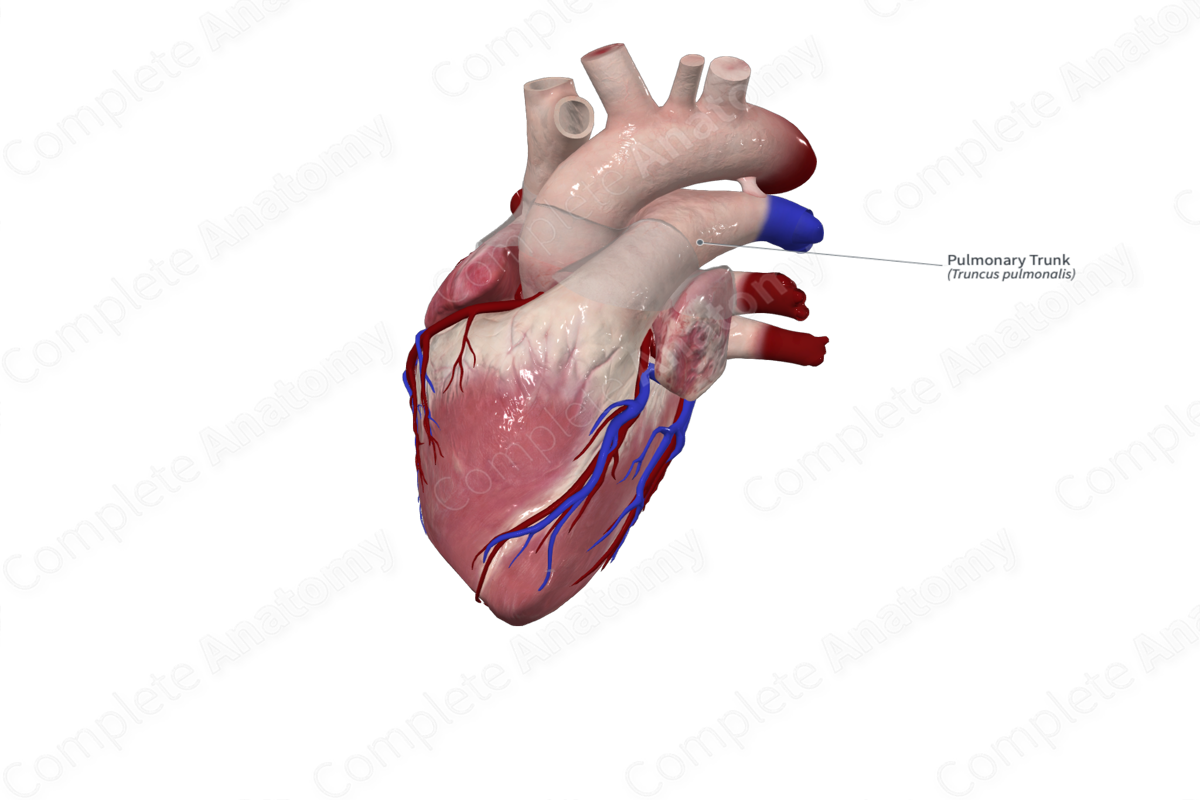
Morphology/Structure
The pulmonary trunk begins at the pulmonary orifice at the base of the right ventricle. It's approximately 5 cm long and 3 cm wide. The entire pulmonary trunk sits within the pericardial sac. It begins anterior and to the right of the ascending aorta. It travels posteriorly, inferior to the arch of the aorta, and ends at the level of the fifth thoracic vertebra. Here it divides into the left and right pulmonary arteries.
Related parts of the anatomy
Key Features/Anatomical Relations
The left lung, its plural lining, and the pericardium lie anterior to the pulmonary trunk, the ascending aorta sits to its right. This is counterintuitive as the aorta emerges from the left ventricle and the pulmonary trunk from the right ventricle. However, due to the rotation of the heart during embryological development, the pulmonary trunk sits on the left-hand side.
The superficial cardiac plexus resides between the bifurcation of the pulmonary trunk and the aortic arch. The left pulmonary plexus is located posterior to its bifurcation point, along with the carina of the trachea and the proximal portion of the left main bronchus.
In fetal life, the pulmonary trunk and the aortic arch are connected by the ductus arteriosus at the level of the pulmonary trunk bifurcation. This structure persists in adults as the ligamentum arteriosum.
Function
The pulmonary trunk carries deoxygenated blood from the right ventricle to the lungs.
List of Clinical Correlates
- Pulmonary hypertension




